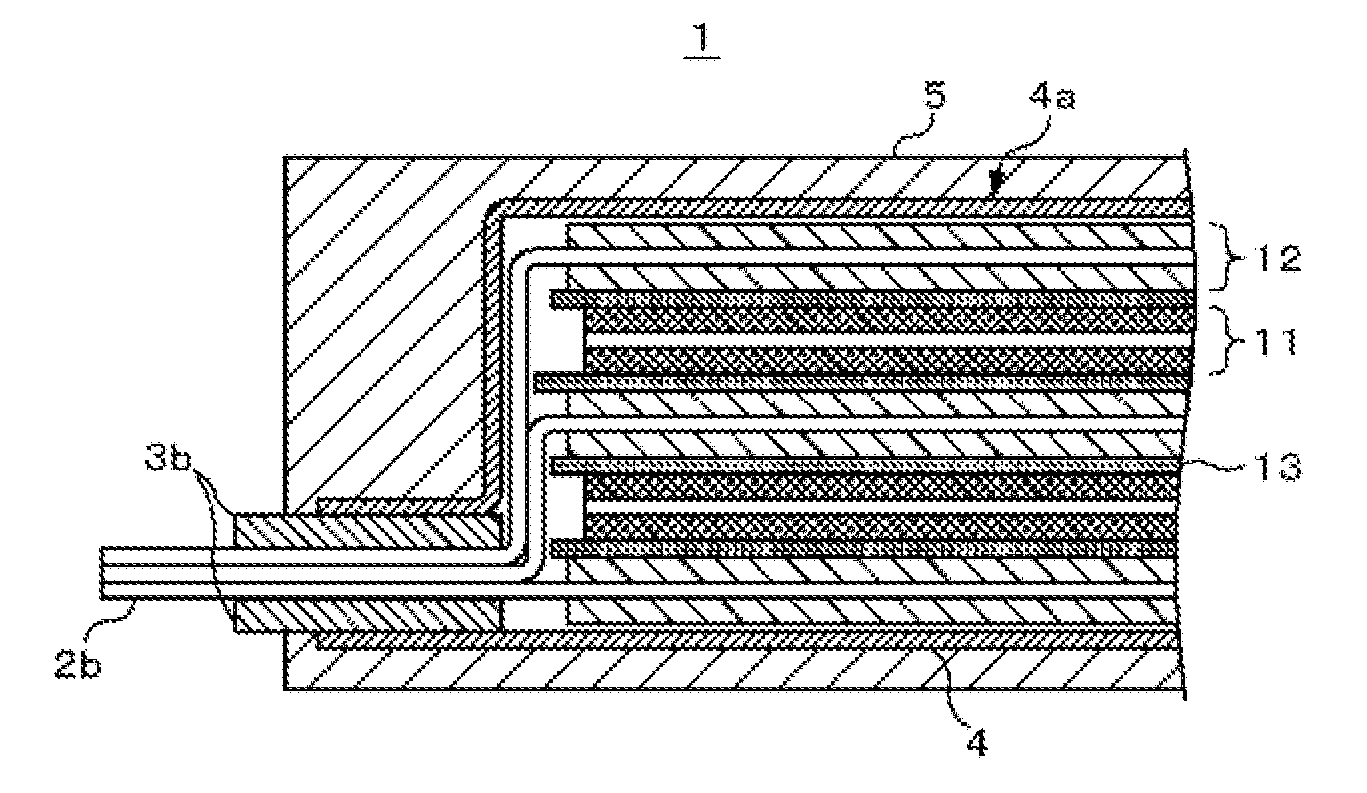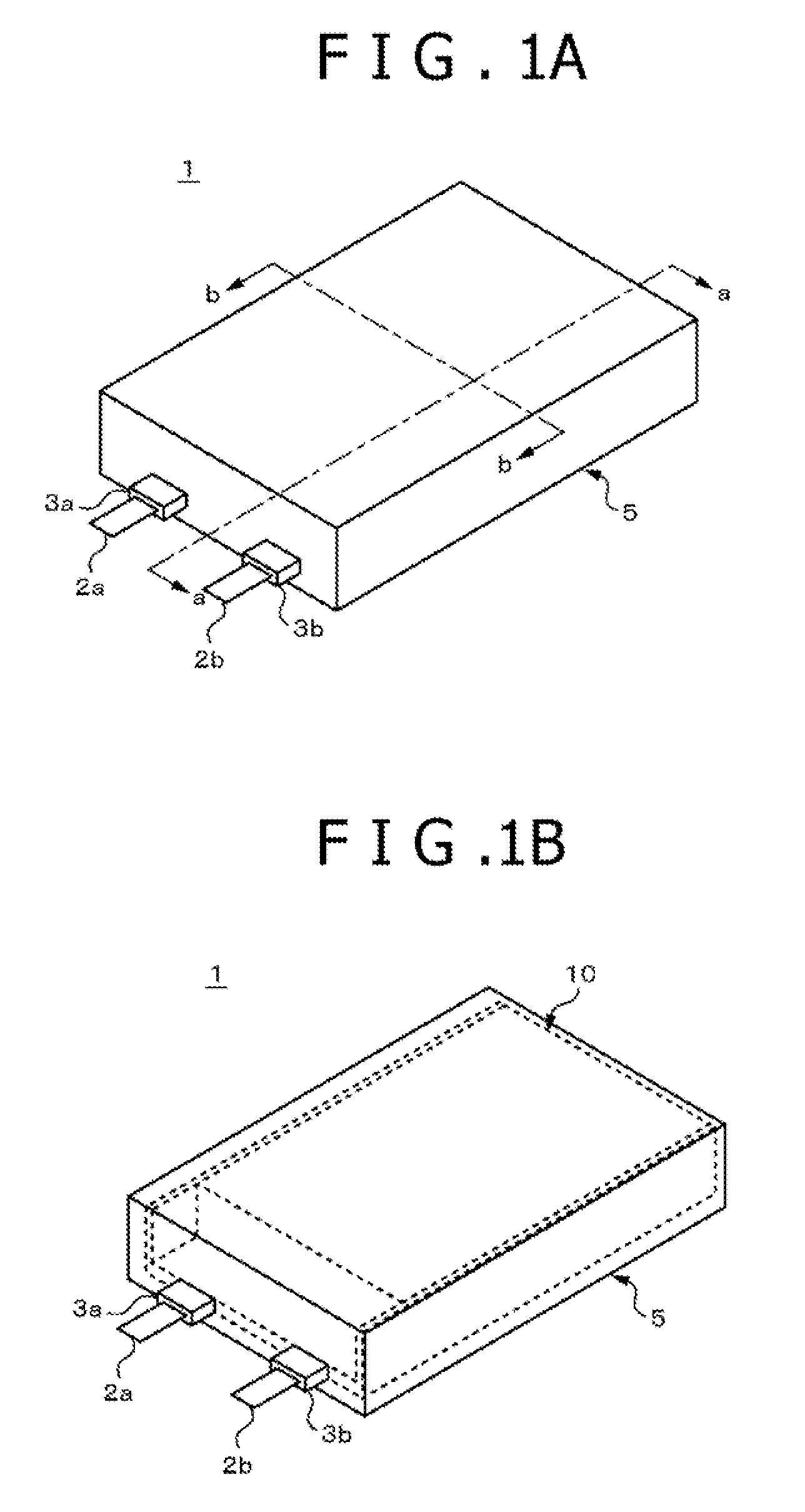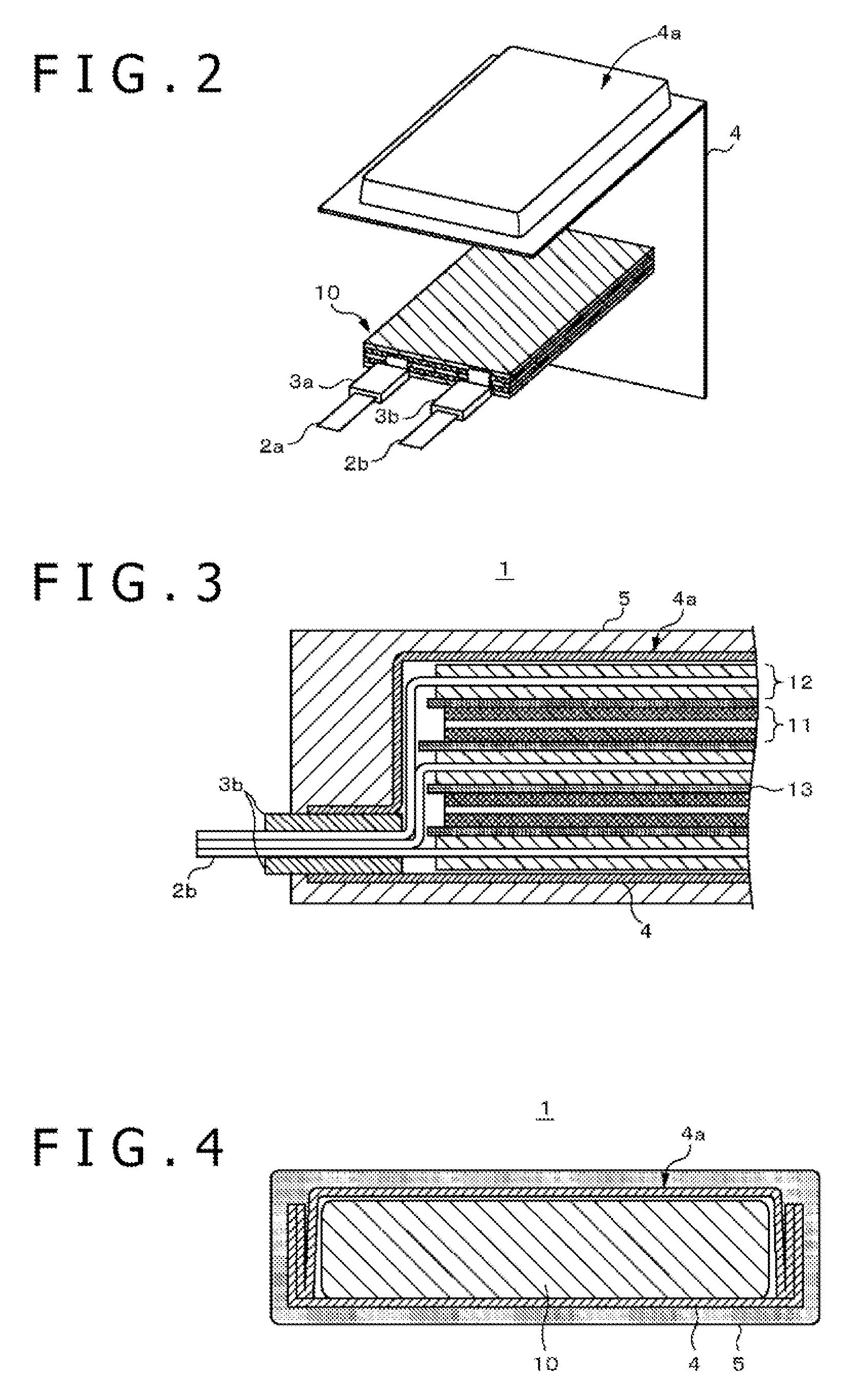Non-aqueous electrolyte battery and method for producing the same
a non-aqueous electrolyte and battery technology, applied in the direction of cell components, final product manufacturing, sustainable manufacturing/processing, etc., can solve the problems of lowering production efficiency, lowering productivity, complicated mold structure of upper and lower case molds, etc., to facilitate the lowering of battery internal pressure, improve battery strength, and improve battery strength
- Summary
- Abstract
- Description
- Claims
- Application Information
AI Technical Summary
Benefits of technology
Problems solved by technology
Method used
Image
Examples
first embodiment
(1) First Embodiment
[0057]Hereinbelow, a first embodiment will be described with reference to the accompanying drawings. In the first embodiment, a non-aqueous electrolyte battery having a battery element covered with a metal laminated film as a casing member material and having a resin protective layer formed around the laminated film is described.
[0058]In the present specification, frequently, a lead side for the positive electrode terminal and negative electrode terminal in the non-aqueous electrolyte battery is referred to as “top portion”, a side opposite to the top portion is referred to as “bottom portion”, and a side portion disposed between the top portion and the bottom portion is referred to as “side portion”. The non-aqueous electrolyte battery using a battery element having a stacked structure is described below, but the present application is not limited to this, and can be applied to any thin battery element having a spirally wound structure, a zigzag folded structure...
second embodiment
(2) Second Embodiment
[0113]Hereinbelow, a second embodiment will be described with reference to the accompanying drawings. Generally, when a battery is, for example, in an overcharged state, the battery temperature is increased to cause decomposition of the electrolytic solution and the like, thus generating gas in the battery, so that the pressure in the battery rises. In the second embodiment, a secondary battery having improved safety when the pressure in the battery rises is described.
(2-1) Construction of Non-Aqueous Electrolyte Battery
[0114]FIG. 12A is a diagrammatic view showing an example of the appearance of a secondary battery 20 according to the second embodiment, and FIG. 12B is a diagrammatic view showing an example of the construction of the secondary battery 20. The secondary battery 20 includes a resin protective layer 5 for improving the battery strength, and further has an opening forming portion 25a such that a sealing portion of the laminated film 4 is opened whe...
example 1
Sample 1-1
Preparation of Positive Electrode
[0127]90 Parts by mass of lithium cobaltate (LiCoO2) as a cathode active material, 5 parts by mass of acetylene black as a conductor, and 5 parts by mass of polyvinylidene fluoride (PVdF) as a binder were uniformly mixed with each other to prepare a positive electrode composition, and the anode mixture prepared was dispersed in N-methyl-2-pyrrolidone to form an anode mixture slurry. The resultant anode mixture slurry was uniformly applied to both sides of an aluminum (Al) foil as a negative electrode current collector, and subjected to vacuum drying at 100° C. for 24 hours, followed by pressure molding by means of a roll pressing machine, to form a cathode active material layer. Subsequently, a positive electrode terminal made of aluminum (Al) was connected to a portion of the positive electrode current collector at one end on which the cathode active material layer was not formed.
Preparation of Negative Electrode
[0128]90 Parts by mass of ...
PUM
 Login to View More
Login to View More Abstract
Description
Claims
Application Information
 Login to View More
Login to View More - R&D
- Intellectual Property
- Life Sciences
- Materials
- Tech Scout
- Unparalleled Data Quality
- Higher Quality Content
- 60% Fewer Hallucinations
Browse by: Latest US Patents, China's latest patents, Technical Efficacy Thesaurus, Application Domain, Technology Topic, Popular Technical Reports.
© 2025 PatSnap. All rights reserved.Legal|Privacy policy|Modern Slavery Act Transparency Statement|Sitemap|About US| Contact US: help@patsnap.com



